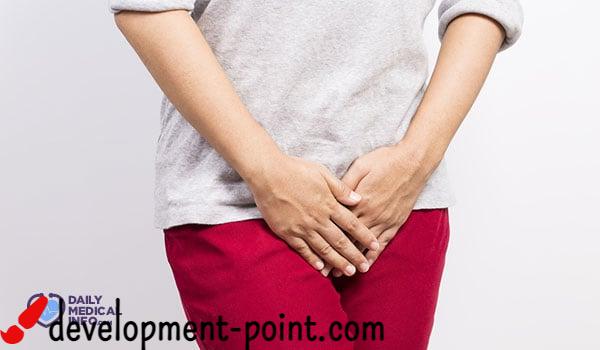Breast shape, formation and functions in the body of women and men
The breast is one of the most prominent organs of the body in females and males, but its anatomy differs greatly between them. This organ has many mysteries and secrets and very important functions. That is why we had to explain to you everything related to it and its most important functions and composition, so follow this article with us.
What is the breast?
The breast (in English Breast) is a glandular organ, and it is classified among the sexual parts of women and men, but its function for females is deeper and greater because their breast gland contains milk ducts and is responsible for breastfeeding.
breast formation
This organ is located at the top of the chest wall, above the chest muscles, and its shape differs greatly between males and females. As it develops and grows more and faster in women due to the effects of the estrogen hormone in their bodies, and this results in the growth of adipose tissue that forms the hemispherical shape of the female breast.
The visible parts of the breasts are the nipples and the areola. As for the internal formation, it is composed of several tissues that form its size and shape. These tissues have several different types, which are:
- glandular tissue, Also known as lobules, these glandular tissues produce milk.
- adipose tissue, It is the tissue that controls and determines the size of the breasts.
- fibrous or connective tissue, It is the one that installs the fatty and glandular tissues in their correct place.
Parts of the female breast
As for the parts that make up the female breast, its anatomy indicates the presence of more than one part, and we will explain them to you.
1- Lobes
This part surrounds the nipples, and each breast contains about 15 to 20 lobes or sections.
2- Lobules
They are small pieces of tissue located inside the lobules. These lobules contain small but swollen glands at the end, which are responsible for milk production.
3- Mammary ducts
They are small tubes or ducts of glandular tissue known as lobules. These tubes carry milk from the gland to the nipples.
4- Nipples
The nipples are one of the most prominent parts of the breasts, and they are located in the middle of the areola. Each nipple is connected to about 15-20 milk ducts, in addition to its content of nerves.
5- Areolae
It is a dark circle surrounding the nipples, containing glands known as Montgomery’s glands. These glands are the ones that secrete lubricating oils. These oils play a very important role, which is protecting the nipples and the surrounding skin from exposure to friction during breastfeeding.
6- Blood vessels
These vessels in the breasts are responsible for circulating blood and passing it throughout the breasts as well as the chest area and the body as a whole.
7- Lymph vessels
These vessels are part of the lymphatic system, and these vessels are connected to lymph nodes or glands that are located in the armpit, chest, and other areas of the body. A fluid passes through these vessels that helps the immune system fight infection.
8- Nerves
As the nipple area contains a large number of nerve endings that reach hundreds, and this is what makes it a very sensitive area, whether to touch or sexual excitement.
Male breast parts
The external shape and structure of the male breast is almost identical to the female breast, except that it does not contain structures specialized in the secretion and production of milk, and during puberty the male hormone testosterone stops the growth of the breast, these reasons are what make it different.
As for the anatomy of the male breast, from the outside it also contains the areola and the nipples. As for the inside, the male breasts also contain milk ducts, but they are not fully developed. As for the tissues, they do not have glandular tissues like the females.
In some cases, men may develop a problem called gynecomastia, as a result of the enlargement of the mammary gland of the man, so that his breast resembles the breast of the female and appears enlarged, and this is what makes it an embarrassing and psychologically affecting condition for those who suffer from it, but in the end it is a benign condition that can be treated with surgery.
Functions of the breast in the body
The breasts have functions that cannot be overlooked, and these functions can be limited to two main functions, which we will explain to you in detail.
milk production
Its main function is to produce milk for breastfeeding. This comes with the help of female hormones, especially estrogen, prolactin, and progesterone. These hormones have a major role in the growth of the breasts and milk production, as follows:
- Estrogen, It extends to the milk ducts to help them form other lateral branches to load larger quantities of milk.
- prolactin hormone, It promotes progesterone production and helps prepare the glands for milk production.
- progesterone, This hormone works to increase the size and number of lobules in order to prepare for breastfeeding, as it inflates the blood vessels and cells of the breast after the ovulation process, so many women may feel pain and swelling in the breasts.
sexual function
As the nipples of the breasts in men and women contain a large number of nerves, and this is what enhances sexual excitement and pleasure.
The most common breast disease
There are some diseases and health problems that can affect the breasts, the most prominent of which are:
- Breast cancer, as it is considered the first threat to the health of the breasts, as about 1 in 8 women are diagnosed with this disease during their lifetime.
- breast cysts
- Non-cancerous benign breast tumors.
- breast lumps
- breast pain
- Fibrocystic changes, which are non-cancerous masses.
- Skin rash.
- mastitis;
- Nipple discharge.
- The expansion of the mammary ducts, which leads to swelling of the milk ducts.
Ways to maintain breast health
Many people suffer from anxiety and fear due to the spread of breast cancer. Therefore, firstly, the dates and times of regular examinations, especially X-rays, must be determined, because this varies according to the recommendations of each case and the risk factors that surround each person.
Also, periodic self-examinations have a very important role in identifying the shape of the breasts and feeling any change that occurs to it easily, and in the event that you notice any problem or something that causes concern, such as changes in the texture and shape of the breasts, nipple secretions, or any other problem, you must immediately refer to a specialized doctor.

